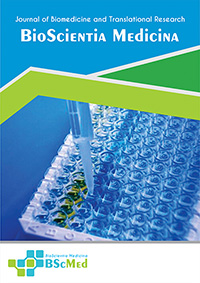Main Article Content
Abstract
Background: α1-adrenergic antagonists are a cornerstone therapy for lower urinary tract symptoms (LUTS) due to benign prostatic hyperplasia (BPH). Their association with intraoperative floppy iris syndrome (IFIS) during cataract surgery is well-established, yet the comparative risk between the highly α1A-selective agent tamsulosin and other α1-blockers has not been adequately quantified in a meta-analysis. This study aimed to synthesize the evidence to determine the magnitude of this differential risk.
Methods: Following PRISMA guidelines, a systematic search was conducted across PubMed, Embase, Scopus, and the Cochrane Library through September 2025. We included comparative studies reporting IFIS incidence in adults on α1-blockers undergoing cataract surgery. Data were independently extracted by two reviewers. The primary outcome was the pooled Odds Ratio (OR) for IFIS, calculated using a random-effects model. Heterogeneity was assessed with the I² statistic.
Results: The search yielded 1,218 records, with six studies comprising 10,878 patients meeting the inclusion criteria. The incidence of IFIS was 18.7% in the tamsulosin group versus 2.9% in the comparator group (other α1-blockers or control). Tamsulosin was associated with a significantly greater risk of IFIS (Pooled OR = 4.28, 95% CI: 2.91–6.31, p < 0.00001). This corresponds to an absolute risk increase of 15.8% and a Number Needed to Harm (NNH) of 7, suggesting one additional case of IFIS occurs for every seven patients treated with tamsulosin instead of a different agent. Moderate heterogeneity was noted (I² = 62%).
Conclusion: This meta-analysis provides robust evidence that tamsulosin carries a more than four-fold increased odds of IFIS compared to other α1-blockers. This substantial and clinically meaningful risk, highlighted by an NNH of 7, mandates a risk-stratified approach to BPH management. A patient's present or future ophthalmological needs must be a central factor in the shared decision-making process when selecting an α1-blocker.
Keywords
Article Details
As our aim is to disseminate original research article, hence the publishing right is a necessary one. The publishing right is needed in order to reach the agreement between the author and publisher. As the journal is fully open access, the authors will sign an exclusive license agreement.
The authors have the right to:
- Share their article in the same ways permitted to third parties under the relevant user license.
- Retain copyright, patent, trademark and other intellectual property rights including research data.
- Proper attribution and credit for the published work.
For the open access article, the publisher is granted to the following right.
- The non-exclusive right to publish the article and grant right to others.
- For the published article, the publisher applied for the Creative Commons Attribution-NonCommercial-ShareAlike 4.0 International License.





